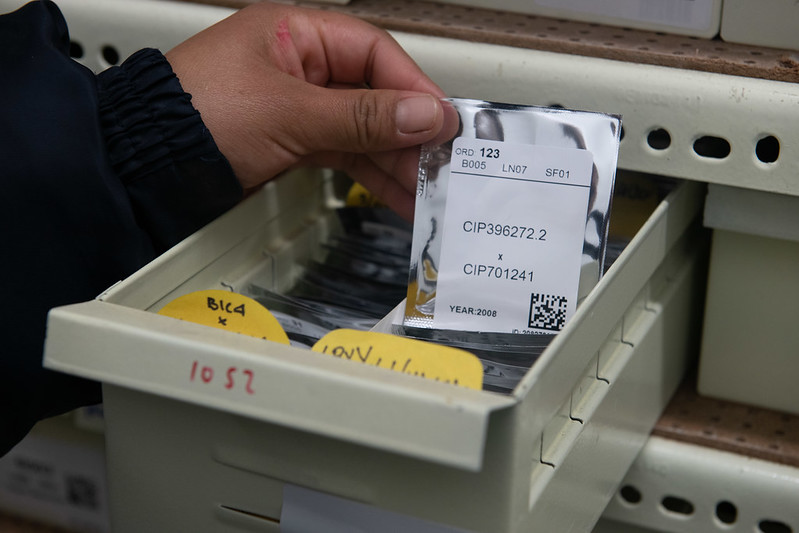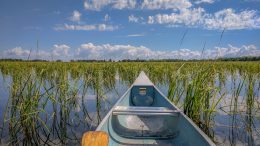For 10,000 years we’ve relied on domesticated plants for our staple foods. But it’s the wild relatives of those crops that are becoming increasingly important to our future food supply.
Over hundreds of thousands of years, these wild foods have adapted to pests, diseases, extreme climates and other inhospitable conditions. That makes their genes particularly important for plant breeding, especially when we’re looking for foods that can withstand a changing climate. Some varieties are still key food and cultural resources today, too.
In a new study published in the Proceedings of the National Academy of Sciences, researchers have taken stock of these wild foods and the conservation threats they face. They inventoried and modeled the distribution of 600 native wild taxa in the United States, including the relatives of barley, beans, grapes, hops, plums, potatoes and other foods.
What they found was concerning: More than half of the wild relatives are endangered in their native habitats. And that poses a threat to our future.
“The contributions of crop wild relatives to food security depend on their conservation and accessibility for use,” the researchers wrote. With mounting extinction threats, the researchers recommended that three quarters of the taxa be deemed an “urgent priority” for collection to boost conservation.
To do that we need a multipronged approach.
“Given the diversity of U.S. native crop wild relatives prioritized for action, ambitious collaborative conservation efforts are needed among gene banks, botanical gardens, community conservation initiatives, and organizations focused on habitat conservation,” they wrote.
So far ex situ conservation — in gene banks and botanical gardens — is insufficient. The study showed 14% of the plants were entirely absent from these repositories, and another 33% were found in fewer than 10 locations. That leaves us with “relatively limited genetic variation for research and education,” the researchers concluded.

Better collaboration with botanical gardens, hobby gardeners and citizen conservationists can help close that gap, they recommend.
Outside of seed banks and gardens, protecting the habitat where these species grow naturally is also important.
Based on the researchers’ mapping of the potential distribution of the plants, some are likely to be found in areas that are already protected — such as the Patuxent Research Refuge, the Grand Canyon, Olympic National Park, the Indiana Dunes, Gulf Islands, Yellowstone and other areas.
But more habitat conservation efforts are needed, and that may include the widening of current protected areas or the establishment of new protected spaces, they write.
That can be tough to do with competing demands on land, but it will also provide additional benefits.
Conserving these natural habitats, the study finds, will help safeguard ecosystems and other species, providing both “known as well as currently unrecognized benefits to society.”
Beyond the work of scientists and land managers, the fate of these wild foods may come down to better public awareness. And for that, botanical gardens could be the best champions.
“While all involved organizations will need to enhance their public outreach around native crop wild relatives,” the researchers conclude, “botanical gardens, which receive more than 120 million visitors a year in the United States, could play a particularly pivotal role in introducing these species to people, communicating their value and plight, and better connecting the concepts of food security, agricultural livelihoods, and services provided by nature for the public.”
Previously in The Revelator:
A Crop Pandemic Would Be as Devastating for Biodiversity and Food Security as COVID-19


